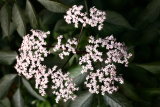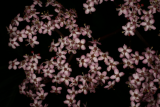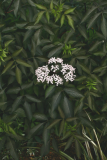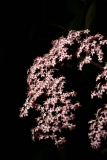Additional notes (click to expand)
Nomenclature
Syn. = Sambucus nigra f. porphyrophylla 'Gerda'; Sambucus nigra f. porphyrophylla 'Black Beauty'; Sambucus nigra 'Gerda'
A synonym of Sambucus nigra 'Gerda' .
Plants of the World online, Kew Science http://plantsoftheworldonline.org/taxon/urn:lsid:ipni.org:names:30122169-2
link
Other use
The leaves, stems and seeds contain cyanogenic glycosides which liberate hydrogen cyanide when crushed or chewed. While elderberry cordials are drunk widely, it has not been accepted for use as a traditional herbal medicine (European Medicines Agency, draft report, 2013)
Note see also Toxicity under Sambucus nigra
Oakeley, Dr. Henry F. (2013). Wellcome Library notes.
link
Toxicity
The leaves, stems and seeds contain cyanogenic glycosides which liberate hydrogen cyanide when crushed or chewed.
Oakeley, Dr. Henry F. (2013). Wellcome Library notes.
link
Humans/Pets: Harmful if eaten; fruits/flowers edible if cooked. HTA guidelines
HTA Guide to Potentially Harmful Plants, 3rd Edition (2022)
Toxicity due to sambunigrin cyanogenic glycoside.
Professor Anthony Dayan, 2021
Sambucus nigra L. f. porphyrophylla 'Gerda'
Family: VIBURNACEAEGenus: Sambucus
Species: nigra L.
Form: porphyrophylla
Cultivar: 'Gerda'
Distribution summary: Eurasia, N.&S. America
Habit: Shrub
Hardiness: H5 - Hardy; cold winter
Garden status: Not currently grown
Reason for growing: Medicinal, other use, toxic, traditional herbal registration



